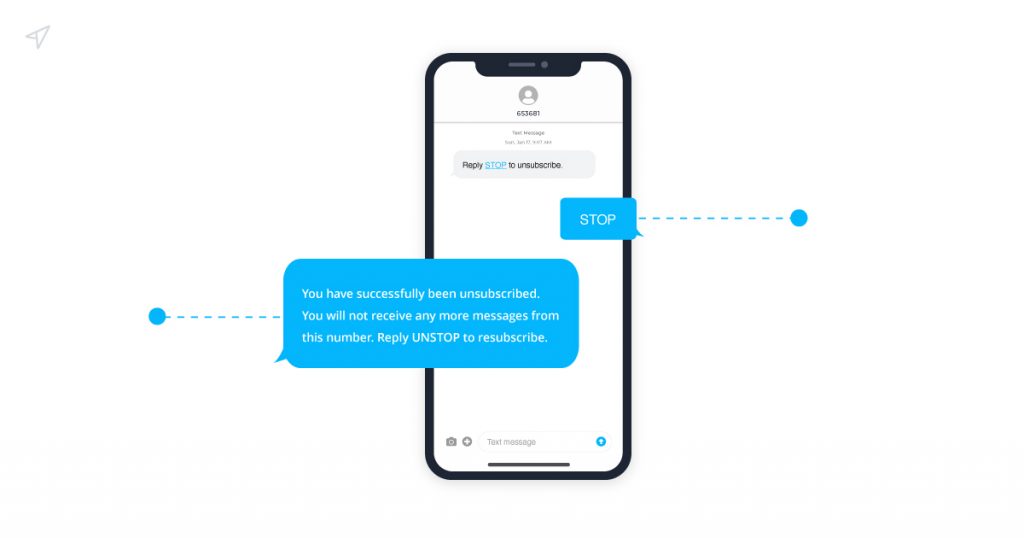SMS marketing remains a useful marketing medium for businesses. Text message marketing and SMS campaigns flourish with the best practices, and chief of this is Managing SMS Lists. It includes practices geared at maintaining clean, updated, and effective SMS lists.
Usually, marketing efforts are first directed at getting customers to opt-in while complying with laws laid down by the Telephone Consumer Protection Act.
After registering multiple opt in’s, most businesses then focus more on growing those opt-in numbers. However, even as you run a personalized, scheduled, and segmented SMS campaign, you should not ignore the importance of managing your list. It should be a continuous process targeted at maintaining the integrity of the mobile phone numbers present in your marketing lists.
Appropriate list management helps to make your campaign strategies more effective. These best practices are discussed below:
Double opt-ins

In order to maintain the integrity of your list, it is important that you implement the double opt-in option. It is especially important for cases where your SMS subscriber list is sourced from non-mobile origins.
- The double opt-in method is ideal because it is a great way to verify whether or not a user is in control of the phone number that has been put down.
- As it does not involve direct interaction with your business shortcode or long code, this authentication process targeted at confirming consent becomes compulsory.
- It is also a great way to build trust. Subscribers should be able to associate opting in via non-mobile sources (In person, via webpages, mobile applications, and Interactive Voice Response phone systems) with the subsequent opt-in confirmation request that is received automatically.
With this, you will share a traceable history with each customer, and it will be pegged to your business number. This source number will also remain very familiar with the user, and subscribers may even grow to expect messages from you.
One final reason why the double opt-in option helps to maintain a healthy list is that it improves deliverability.
The automated opt-in confirmation request is often explicitly clear about the type of messaging service a user is signing up for. Including opt-out instructions matters too.
Usually, it is best that these are laid out clearly in other to reduce complaints from confused users to their wireless carriers. This occurs when subscribers follow proper opt-in processes but become unsure about how they opted in and the theme of a business’s campaign.
These complaints result in problems relating to deliverability as the complaints harm that numbers reputation with the destination network operator.
Dealing with responses to double opt-in requests

Sometimes, users do not respond outrightly with the ‘YES’ targeted at indicating consent or a ‘STOP’ to prevent more messages from being sent. As a rule, if a user fails to respond with either of those, you are allowed to send one more message.
This message should achieve two things:
- communicate clearly to the receiver that it will be the last they will receive if no action is taken
- indicate that users can reply STOP to prevent more messages from being sent
Ambiguous responses to opt-in prompts will also require an additional prompt to the user. The call to action in the message should be centered on getting a user to reply with either ‘YES,’ ‘STOP’ or ‘HELP.’
The message should also indicate what each of these does. As a rule, variations of yes’s are acceptable regardless of the capitalization. Also, ambiguous STOP replies should be interpreted as a denial of consent.
With these practices, it is highly unlikely that you will be sending unwanted messages to users.
The HELP command

The HELP instruction is often scheduled and should come along with the welcome confirmation message. As per schedule, HELP instructions can be included in your prompts once a month or every six messages.
Typically, when a user replies with this command, the response should include:
- your business’s name and description
- contact details where they can get more information about your business
- statements indicating that the messages are continuous, indicating the frequency too
The automated response should also provide information on any possible fees or charges and include instructions on Opting out.
Addressing Opt-out requirements
Just like with HELP instructions, users should get scheduled opt-out instructions. Clearly communicated opt-out instructions should also be included in the welcome confirmation message. Various words can be sent by a user to revoke consent, and it is best that your messaging service is sensitive enough to pick these up.
In especially ambiguous cases where users send in a combination of keywords and phrases difficult to be picked up by the automated system, a manual review process would be ideal. This way, you are able to sift through a horde of ambiguous messages and improve on the pre-existing automated opt-in method.
Special requests

STOP, and UNSTOP are two commands that are able to trigger blocks at the carrier gateway level. In the United States and Canada, a network layer filters out opt-out commands. A user can block messages from being sent from a toll-free number by responding with variations of the word ‘STOP.’ This message automatically puts a user in a gateway level opt-out list.
On the other hand, replying with exactly ‘UNSTOP’ removes a user from this opt-out list. No other variations are acceptable, and it is the only way a subscriber can begin receiving messages. UNSTOP is an inbound command.
In some instances, some short code messages do not have to advertise opt-out instructions. However, clearly communicated opt-out instructions must be included in a marketing program aimed at being recurrent.
They must also include HELP instructions. Overall, your short code messaging service must be receptive to generally acceptable opt-out keywords such as STOP, END, UNSUBSCRIBE, and CANCEL.
Conclusion
While running your SMS campaign, it is important that you don’t get carried away with only implementing strategies and processes. List maintenance is a routine process that can dictate the extent of the success of your campaign. Ensure that you apply these practices to your mobile marketing strategy!
Need to chat about your mobile marketing strategy?
More than 10,000 marketers use Maropost to engage with their prospects and customers through emails, SMS, social media and more. We’re here to help you growing your business!
Chat Now